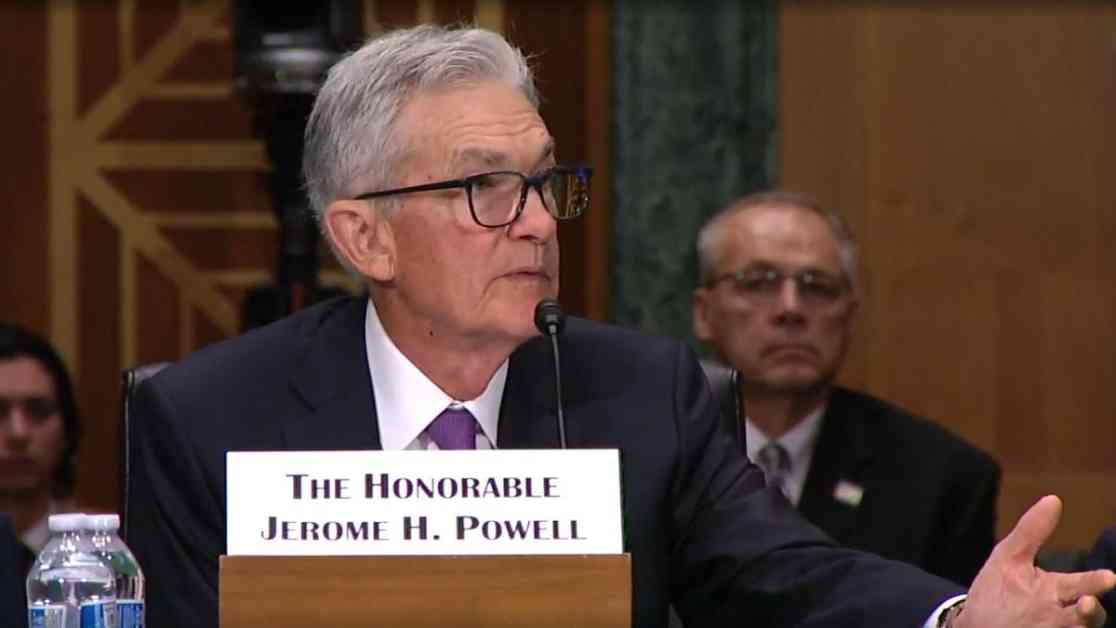Boosting Consumer Confidence is Crucial for the Federal Reserve – A Look at Why it Matters
The Federal Reserve plays a crucial role in maintaining stability in the economy, and a key aspect of this is boosting consumer confidence. The impact of consumer confidence on the economy cannot be overstated, as it has the power to drive spending, investment, and overall economic growth.
The 2007-2008 financial crisis serves as a stark reminder of the importance of consumer confidence. Leading up to the crisis, there were signs of trouble in the capital markets, with individuals defaulting on home loans and bank balance sheets deteriorating. However, the mainstream media initially downplayed these warning signs, leading to a lack of concern among the public.
As the crisis unfolded, consumer confidence plummeted. Many Americans saw the value of their homes decline, which had a direct impact on their net worth. This loss of wealth led to a decrease in consumer spending, further exacerbating the economic downturn.
The officials at the Federal Reserve, including individuals like Neel Kashkari, who were actively involved in the bailout process, understand the devastating effects of a loss of consumer confidence. Having also navigated the challenges brought on by the COVID-19 pandemic, they are acutely aware of the importance of maintaining consumer confidence to support economic recovery.
The Role of the Federal Reserve in Boosting Consumer Confidence
The Federal Reserve has the tools and authority to influence consumer confidence through its monetary policy decisions. By adjusting interest rates and implementing measures to support financial stability, the Fed aims to instill confidence in consumers and businesses, encouraging spending and investment.
During the early 2000s, the housing market was booming, driven by low interest rates and easy access to credit. Banks were eager to lend money, leading to a surge in borrowing and spending. However, as housing prices began to decline, consumers found themselves overleveraged and unable to repay their debts, resulting in a collapse of consumer confidence.
In response to the crisis, the Fed raised interest rates to curb excessive borrowing and spending. This led to a decline in consumer confidence and a sharp economic downturn. It took years for consumer confidence to recover, highlighting the long-lasting impact of a loss of confidence on the economy.
The COVID-19 pandemic presented a similar challenge, as lockdowns and economic uncertainty led to a sharp decline in consumer confidence. The Fed swiftly implemented measures to support the economy, including cutting interest rates to near zero and injecting liquidity into the financial system.
Current Challenges and the Path Forward
Recent data indicates a slight easing in consumer confidence, likely due to rising interest rates. The Fed must carefully navigate this challenging environment to ensure that consumer confidence remains stable to support economic growth.
Bank of America CEO Brian Moynihan emphasized the importance of the Fed taking proactive measures to support consumer confidence. Failure to do so could result in a significant setback for the economy, requiring a prolonged recovery period.
Looking ahead, the Federal Reserve is expected to continue with rate cuts to bolster consumer confidence and promote economic stability. These measures are crucial in preventing a repeat of past crises and ensuring a sustainable recovery from the challenges posed by the pandemic.
Conclusion
In conclusion, boosting consumer confidence is essential for the Federal Reserve to maintain economic stability and support growth. The lessons learned from past crises highlight the importance of proactive measures to instill confidence in consumers and businesses.
By understanding the impact of consumer confidence on the economy and taking decisive action to support it, the Federal Reserve can help pave the way for a robust and resilient economic recovery. Through careful monitoring of economic indicators and timely interventions, the Fed can play a critical role in shaping the future trajectory of the economy.














